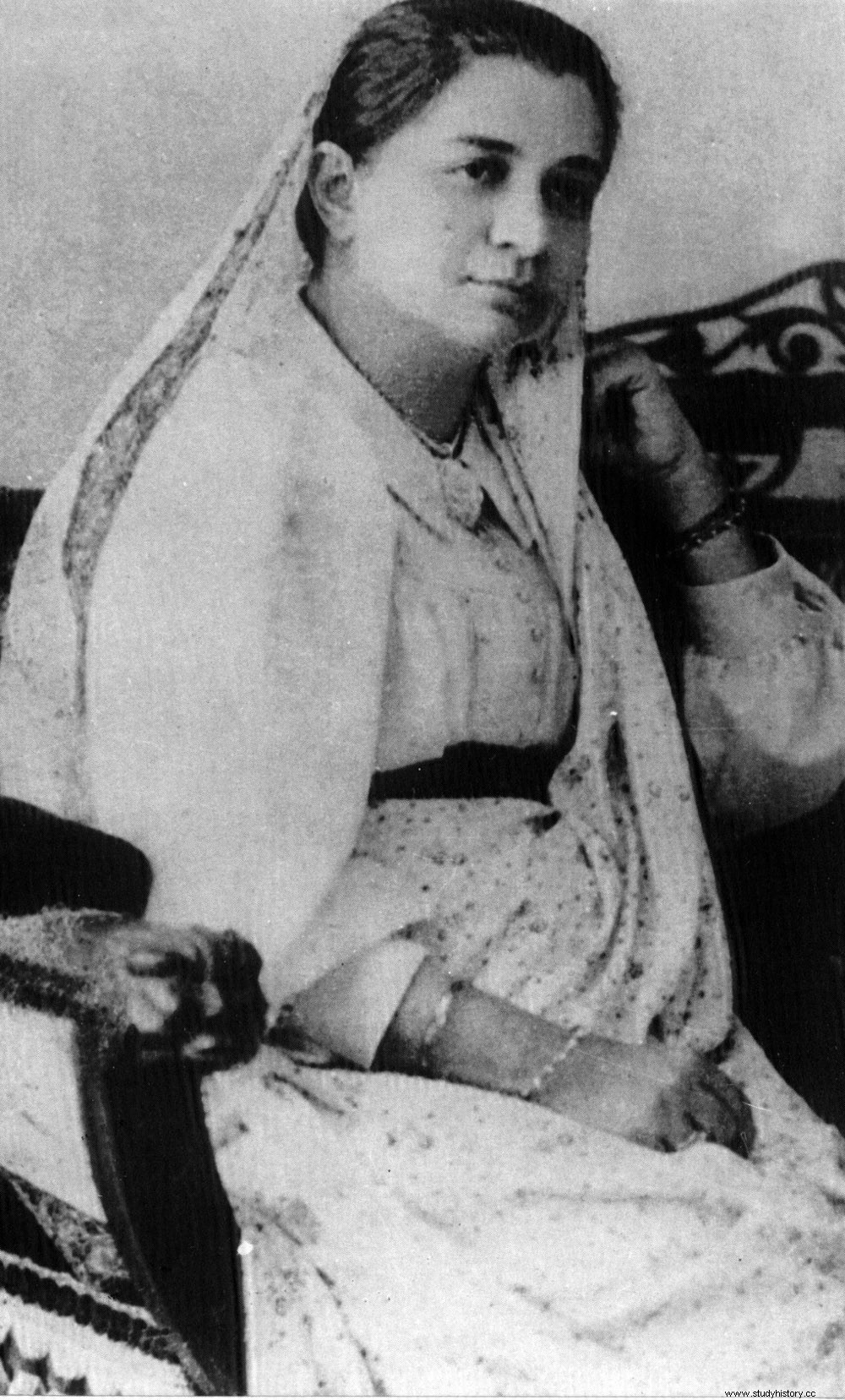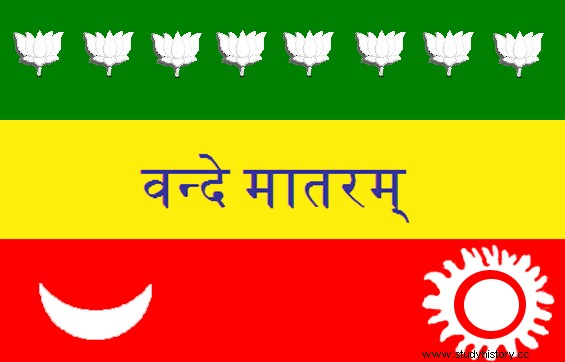Bhikaiji Rustom Cama, née Bhikai Sorab Patel (1861 – 1936) was a prominent figure in the Indian independence movement.
The Indian Home Rule Society
 Bhikai Sorab Patel was born in Bombay on September 24, 1861, into a privileged Parsi family. His mother Jaijibai Sorabji Patel and his father Sorabji Framji Patel, a lawyer and merchant, are prominent members of the community. Educated at the Alexandra Native Girl's English Institution, Bhikhaiji proved gifted at school, especially in languages. In August 1885, Bhikhaiji married Rustom Cama, a wealthy jurist close to the British who aspired to enter politics, but the marriage was not happy.
Bhikai Sorab Patel was born in Bombay on September 24, 1861, into a privileged Parsi family. His mother Jaijibai Sorabji Patel and his father Sorabji Framji Patel, a lawyer and merchant, are prominent members of the community. Educated at the Alexandra Native Girl's English Institution, Bhikhaiji proved gifted at school, especially in languages. In August 1885, Bhikhaiji married Rustom Cama, a wealthy jurist close to the British who aspired to enter politics, but the marriage was not happy.
Bhikhaiji devotes much of his time to social works. In October 1896, Bombay was struck by famine and then by the bubonic plague, and Bhikhaiji joined the teams caring for the sick. Contracting the plague herself, she was sent to the United Kingdom for treatment in 1901. There she met Shyamji Krishna Varma, well known in the London Indian community for his nationalist speeches. Through him, she came into contact with Dadabhai Naoroji, chairman of the British Committee of the Indian National Congress, and entered his service as personal secretary. With her new friends, she co-founded the Indian Home Rule Society in 1905.
Parisian exile and the Paris Indian Society
As Bhikhaiji Rustom Cama prepared to return to India, she was told in London that her return would not be permitted unless she signed a declaration stating that she would not participate in any nationalist activities. She refuses, and leaves London to settle in Paris, where she co-founds the Paris Indian Society. From there, she wrote revolutionary nationalist texts which she published in the Netherlands and Switzerland and discreetly brought to India.
 On August 22, 1907, Bhikhaiji participated in the Congress of the Socialist International in Stuttgart (Germany), where, describing her experience of famine and disease in India, she calls for her country's independence, equality and human rights. She then unrolls a flag she calls "Indian Independence Flag", derived from the Calcutta flag and co-designed by Bhikhaiji. This flag will be one of the models used for the current flag of India.
On August 22, 1907, Bhikhaiji participated in the Congress of the Socialist International in Stuttgart (Germany), where, describing her experience of famine and disease in India, she calls for her country's independence, equality and human rights. She then unrolls a flag she calls "Indian Independence Flag", derived from the Calcutta flag and co-designed by Bhikhaiji. This flag will be one of the models used for the current flag of India.
Alongside his fight for Indian independence, Bhikhaiji campaigned for gender equality. In 1910, she spoke in Cairo, Egypt, before a male audience, to whom she asked:"I see here the representatives of only one half of the population of Egypt. May I ask where is the other half? Sons of Egypt, where are the daughters of Egypt? Where are your mothers and sisters? Your wives and daughters? » ("I see here the representatives of only half the population of Egypt. May I ask where is the other half? Sons of Egypt, where are the daughters of Egypt? Where are your mothers and sisters? Your wives and daughters? "). His most important fight remains that for the independence of his country.
The return to India
Most of Bhikhaiji's companions left France in 1914, when the country allied with the United Kingdom, but she chose to stay. Briefly arrested in 1914 when she tried to agitate troops from Punjab, she was sent to Vichy where she was imprisoned. Due to poor health, she was released in November 1917. After the war, she returned to her home in Paris and continued to live in exile in Europe until 1935. That year, a heart attack left her seriously sick and partially paralyzed. She then appealed to the British government to allow her to return home, eventually agreeing to renounce all nationalist activity.
Bhikhaiji Rustom Cama returned to Bombay in November 1935. She died there nine months later at the age of seventy-four. According to her wishes, her property is bequeathed to an orphanage for girls.
